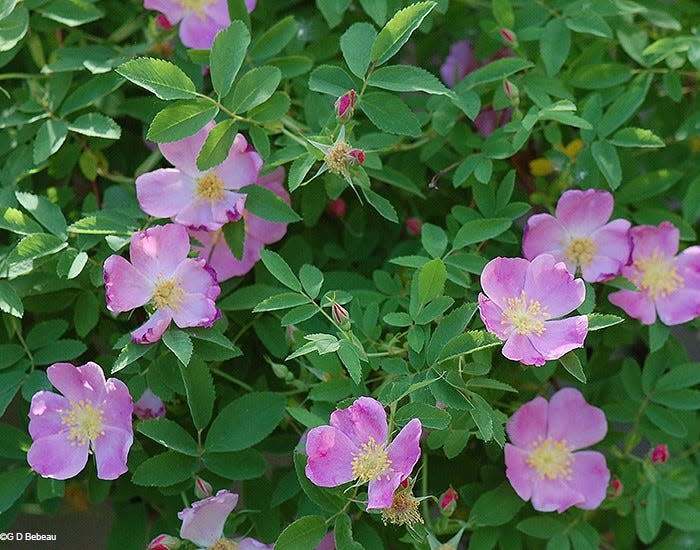Native Plant: Rosa arkansana yields vitamin C-rich rose hips and food for insects, animals

Rosa arkansana, one of several plants known as prairie roses in the United States, is native to 21 states (including Ohio) and grows primarily between the Rocky Mountains and the Appalachians, from Minnesota to Texas. The “arkansana” in the species name comes from the Arkansas River in Colorado where the species was first collected.
Rosa arkansana is a true prairie plant that thrives in full sun and poor soil and is extremely drought-tolerant once established. It flourishes with almost no care. Its lovely pink blooms, strong scent and minimal maintenance requirements would benefit homeowners with large lots who might want to use prairie rose in a low hedgerow or as a splash of color at the edge of a woodland.
Native Plant: For beauty without all the maintenance, try the blue flag iris
It is not recommended for use in a mixed perennial border because it will out-compete most other less-hardy plants.
The prairie rose is a long-lived low-growing shrub with a spreading habit that ranges in height from 18 inches to several feet tall. Plants grow from a central crown that has a deep tap root.
New plants flower two to five years from initial planting. They bloom for about three weeks between late spring and mid-summer, producing five-petaled pink flowers with a central cluster of yellow stamens. The 1- to 2-inch-wide blooms last several days and occur both as solitary flowers and in clusters of two or three.
The flowers appear primarily on new-growth stems each year. These are not prickly, though any old growth stems that survive the winter are densely covered in thorns. Leaves are compound, composed of seven to 11 leaflets, and turn yellow to red in the fall.
Also of visual interest are the half-inch round fruits or rose hips produced by each flower. These turn bright-red in late summer and are a nutritious food for the many birds that eat them. The hips are high in vitamin C and were prized by Native Americans for both their medicinal and nutritional value.
Native Plant: Woodland phlox 'a symbol of love and pleasant dreams for young ladies'
Rosa arkansana is pollinated by a variety of insects and long-tongued bees that feed on its nectar. It is also browsed by deer and rabbits, which do little long-term damage to the low-growth thicket formed by established plants, though heavy browsing by deer can significantly reduce future flower production.
Growing conditions
Hardiness zones: 4 - 11
Sun: full sun to partial shade
Water: drought-tolerant
Soil: anything but wet
Maintenance: little maintenance is required
Propagation: Seeds are difficult to germinate. Most successful starts are from plants available from native plant nurseries.
Pests and diseases: none known
This article originally appeared on The Columbus Dispatch: Rosa askansana, also known as prairie rose, needs little maintenance

 generic
generic 